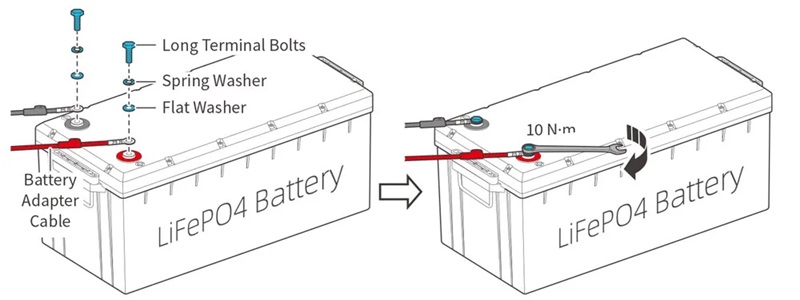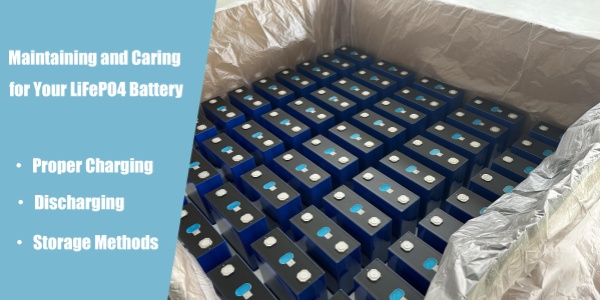Step-by-Step Guide for Correctly Installing LiFePO4 Battery Terminal Bolts, Spring Washers, Flat Washers, and Cables
Installing the terminals, bolts, washers, screws, and cables of a LiFePO4 battery cell is crucial for ensuring proper electrical connections and safe operation of the system. For beginners, understanding the correct installation sequence is essential. This guide will walk you through the proper order of installation to ensure the safety and stability of your battery system.

Why is it important to follow the correct steps for installing LiFePO4 battery terminal bolts, spring washers, flat washers, and cables?
1. Prevent battery short circuits and polarity reversal, which could lead to permanent battery damage.
2. Ensure the correct torque specifications for secure connections, avoiding terminal melting.
3. Proper placement of insulation layers and washers to prevent fire hazards.
4. Follow the correct steps to avoid the need for disassembly during use.
Here are the steps for installing the components of a LiFePO4 battery terminal:
· Flat Washer: First, place the flat washer onto the bolt. The primary purpose of the flat washer is to increase the contact area, protect the surface of the connector from being scratched by the bolt head or nut, and distribute the bolt’s pre-tension force, preventing loosening of the connection.
· Spring Washer: Next, place the spring washer onto the bolt, on top of the flat washer. The spring washer provides additional pre-tension force. When the bolt is tightened, the spring washer generates continuous elastic pressure, helping to prevent the bolt from loosening.
· Bolt: Insert the bolt through the hole in the LiFePO4 battery terminal.
· Cable: Slide the ring terminal of the cable through the bolt and position it on the opposite side of the LiFePO4 battery terminal.
· Flat Washer and Spring Washer: Place another flat washer and spring washer on the ring terminal of the cable (this step may vary depending on the specific design; sometimes only a flat washer is needed on the cable side).
· Tighten the Nut: Use the appropriate tool (such as a wrench or ratchet) to tighten the nut, ensuring the connection is secure and reliable.

Important Notes:
1. Ensure that the cable terminal makes contact with the top surface of the battery terminal, and place the washer on top of the terminal. Never place the washer between the battery terminal and the cable terminal to avoid high resistance and overheating issues.
2. Avoid short-circuiting the battery terminals to prevent sudden currents that could cause irreversible damage to both the battery and the system.
3. Always check the polarity before making connections to avoid permanent battery damage due to reversed polarity.
4. To ensure the system operates safely and reliably, follow the manufacturer's recommended torque specifications when installing the cables. Avoid over-tightening or leaving the connections too loose.
Please note that specific installation steps may vary depending on the battery terminal design, cable specifications, and safety requirements. Always follow the manufacturer's guidelines and safety protocols during installation to ensure proper, secure, and safe assembly.
If you have more technical questions, feel free to leave a message: https://www.energy-x.org/contact-us/

